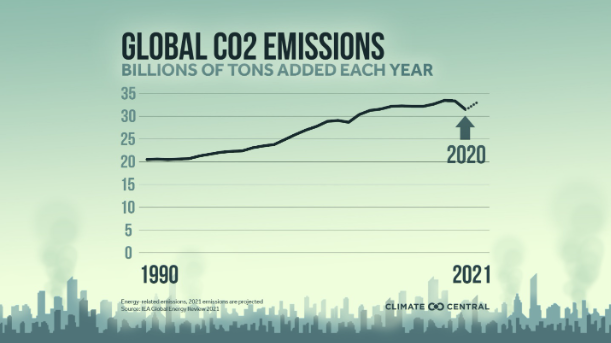||| CLIMATE EYES BY STEVE BERNHEIM |||
“How can we work
with the Comprehensive Plan …
to create a culture that lives
harmoniously with … Nature?”
Last week twenty local residents hooked up on a conference call to ponder this question and share their thoughts. According to several persons at the meeting, the task is overwhelming, with greenhouse gas emissions being only a part of the fear.
Washington State has set the target goal for release of greenhouse gas emissions in 2030 at 50 million tons of CO2, a 50% reduction from 2018 levels when CO2 emissions statewide were 100 million tons.
Statewide in 2018, most GHG emissions came from transportation (45%) and burning fuels to produce heat (24%).The biggest subcategories statewide were on-road gasoline (22%), oil and natural gas burning for residences, business and industry (22%), coal-fired electricity (12%), and aviation fuel (9%).

By having some idea of these actual emission numbers and others, scientists and policy analysts can devise a “greenhouse gas inventory” of different places at different times which permits lawmakers to claim the ability to quantify past emissions and visualize goals for future emission reductions.
Which is great at the State level, where the Legislature will continue to pass laws in the face of the climate emergency (like conditionally mandating emission-free passenger cars and trucks by 2030, not yet signed by Governor Inslee). And at the National level, the President will continue to enact laws and enforce orders (like canceling the Keystone Pipeline). At the international level, the United States enters into treaties and agreements with other countries, like the Paris Agreement.
But at the local level, from the open spaces of Doe Bay, to the village streets of Eastsound, past the winding roads of Deer Harbor, and westward, round about the coastline from house to house, where do local emissions come from and from where will they stop coming? driving? home heating? waste disposal? residential construction? All of these activities and the rest of them generate greenhouse gases which can be quantified or at least estimated and must be halved.
For example, let’s say hypothetically that 100 cars on Orcas Island fill up with 10 gallons each, every day. Those cars fill up on 1000 gallons of gasoline a day … burning that much gasoline at 8.78 kilograms of CO2 per gallon makes about 10 tons of CO2 equivalents per day, from this amount of gasoline. That’s about 3,600 tons per year from Orcas Island gasoline per thousand gallons per day. This hypothetical quantification at least gives us some idea of what kind of emissions reductions can be possible.
Emissions in San Juan County? San Juan County greenhouse gas inventory? From whence comes the County government’s data used to justify climate emergency ordinances and planning on the County level?
We have some data from San Juan Island National Historic Park where in 2007 a report said the largest greenhouse gas contributor to park operations was transportation, totaling 253 tons of carbon dioxide equivalents annually.
And in San Juan Capistrano, California, we read that construction of a 136-unit development is predicted by its builders to emit 1800 metric tons over the several years of its construction.
There’s the San Juan Generating Station for the New Mexico Public Service Company that emitted almost 11,000 tons of CO2 in 2008.
But what about San Juan County Washington? How are we in San Juan County going to reduce our fair share of that (approximately) 50% reduction statewide in Washington that is scheduled to occur over the next — gulp — eight and a half years?
The Swinomish Tribe published a plan addressing the Tribe’s priority climate concerns: fisheries, shoreline and physical environment, community health, scientific research, hunting/gathering/food systems, and emergency management. The ferries have a climate action plan: more biodiesel, electrify the fleet, slow down. Skagit County has had a climate action plan since 2010 to reduce emissions to “80% below 2000 levels by 2050,” though there is some opinion that little is done yet to achieve that.
Farther afield, Edmonds has concluded their local GHG emissions come mostly from transportation and fuel for heating so the focus is on transportation and heating solutions: reduce vehicle miles travelled with development planning, transit, and self-propelled alternatives, increase renewable energy, and improve building standards.
Less often thought of, our neighbors on Salt Spring Island have leapfrogged local government to write their own climate action plan addressing adaptation, emissions limits, transportation, physical infrastructure, food supply and local farms, forests, water supplies, land use, and community involvement. Without local government’s help they convened a climate action committee and drafted their own plan ,declaring an emergency and attempting to lead a path to carbon neutrality by 2030, and begging that local government apply its powers toward that goal.
Which brings us back to the “overwhelming” task ahead for the local residents gathered last week on a video conference call to talk about drafting a comprehensive plan to live harmoniously with nature.
In 2008, the San Juan County Council promised:
- a “county webpage on climate change that serves as an information resource,”
- to create “an inventory of … county geographical greenhouse gas emissions,” and
- to “set a target” for emissions reductions.
Perhaps at a minimum we should be planning for climate change by reducing greenhouse gases and vehicle miles traveled, and by preparing for increased fires, floods, and ocean acidification. San Juan County has more than a quarter of Washington State’s entire shoreline (800 out of 3000 miles), and the median projection for the “likely” sea level rise in the County is 6-12 inches by 2050 and 2 feet or more by 2100, though higher magnitudes over five feet are possible.
When will the County Comprehensive Plan be re-written to create a culture that lives harmoniously with Nature?
Until we receive more guidance from our local government, it will remain up to each of us to decide whether to do our part. If the COVID crisis provides any guide, the way ahead will not be as simple as it could be.
Three things to start:
- To reduce emissions from food: buy locally grown food at the Co-op and groceries, patronize farmers markets, CSAs, and roadside farm stands, pay a fair price directly to the producer for better food, stop eating industrialized meat and fish products.
- To reduce emissions from self-transportation: support local businesses instead of off-island driving; fly a lot less, stay local, bike and walk on the roads, and soon share vehicles again.
- To increase the odds: care, learn, and show up at local meetings to share your opinion with others.
Planning Commission meetings are 3rd Fridays at 8:30 am; County Council meetings are most Mondays and Tuesdays at 9 a.m. Once the meetings get started, they offer easy online opportunities to speak briefly on the topic of your choice in a relaxed audio-visual space and hear others doing the same.
**If you are reading theOrcasonian for free, thank your fellow islanders. If you would like to support theOrcasonian CLICK HERE to set your modestly-priced, voluntary subscription. Otherwise, no worries; we’re happy to share with you.**









Thanks Steve. We need to know what the Salt Spring folks did to get such public participation. We can do this, as always, IF we want to.
The County Charter commission is this week seriously considering the idea of a new elected county officer devoted to climate and the environment.
Thanks, Steve for all your articles!
The link for the Planning Commission gets me to an Agenda with an active link.
But I have had trouble finding links for the County Council ever since the AV Capture All system was instituted.
The recordings of past Council meetings are available, but no agendas for coming meetings.
Is this because I have a Mac?
I wish that our County would go back to the previous web interface.
I would get an email with an agenda AND with links to documents.